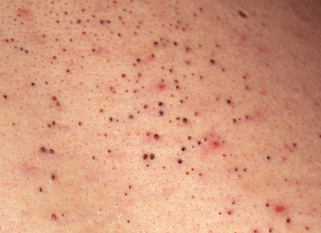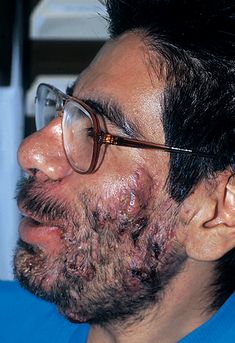Minimally. Association between diet and acne has long been postulated. Arguments for such an association include the observations that acne prevalence is low in rural, nonindustrialized societies and increases with the adoption of a Western diet. A study published in 1971 rechallenged patients with large amounts of foods that reportedly exacerbated their acne without showing any significant change in acne severity. In another study, 1925 patients kept food diaries and found milk to be most commonly associated with their acne flares. A study showing no association between chocolate bar consumption and acne has been criticized for several reasons most recently, because the chocolate bars given to subjects during the study did not contain milk, in contrast to the average chocolate bar of the time. To further examine the role of diet and acne, especially dairy consumption, a recent study examined data from the Nurses Health Study (NHS) II to see if there was a positive association between milk in the teenage diet and acne. Intake of milk during adolescence was associated with a history of teenage acne. The association was more marked for skim than whole milk. Interestingly, soda, French fries, chocolate candy, and pizza were not significantly associated with acne. The authors hypothesized that the hormonal content, not the fat in milk, may be responsible for the acne. Two other large studies have reported a similar positive association between milk intake and acne. Smith, Mann, Braue, et al. enrolled 43 men with moderate acne, ages 15 to 25, in a trial randomized to a low glycemic index diet or a high glycemic–index diet. The men on the low glycemic–index diet lost significantly more weight and had significantly improved acne over the other group. The relative contribution of the high glycemic–load diet on acne pathogenesis versus the improvement in insulin and hormone levels with weight loss is unknown.
Adebamowo CA, Spiegelman D, Danby FW, et al: High school dietary intake and teenage acne, J Am Acad Dermatol 52:207–214, 2005.
Smith RN, Man NJ, Braue A, et al: The effect of a high-protein, low glycemic-load diet versus a conventional, high glycemic-load diet on biochemical parameters associated with acne vulgaris: a randomized, investigator-masked controlled trial. J Am Acad Dermatol 57: 247–256, 2007.
Spencer, EH, Ferdowsian HR, Barnard ND: Diet and acne: a review of the evidence, Int J Dermatol 48:339–347, 2009.











